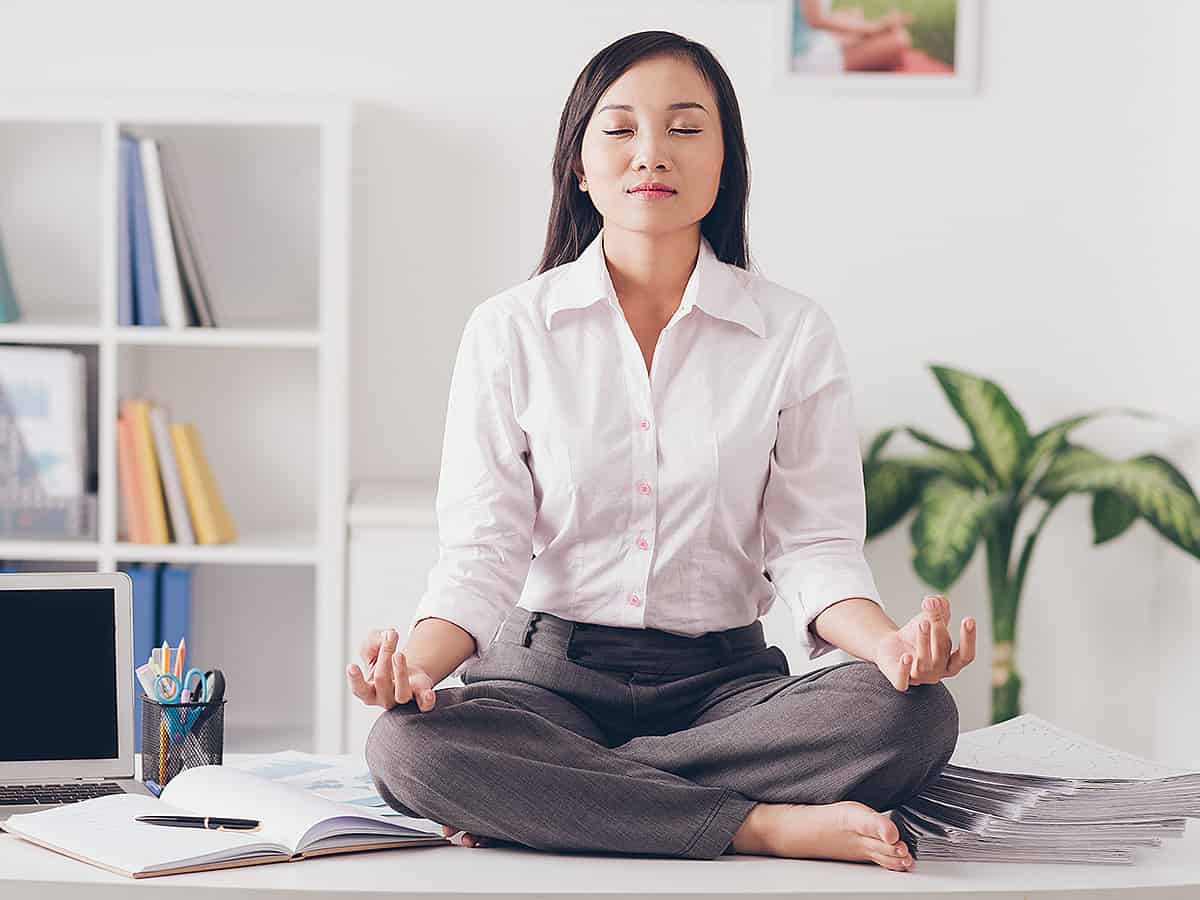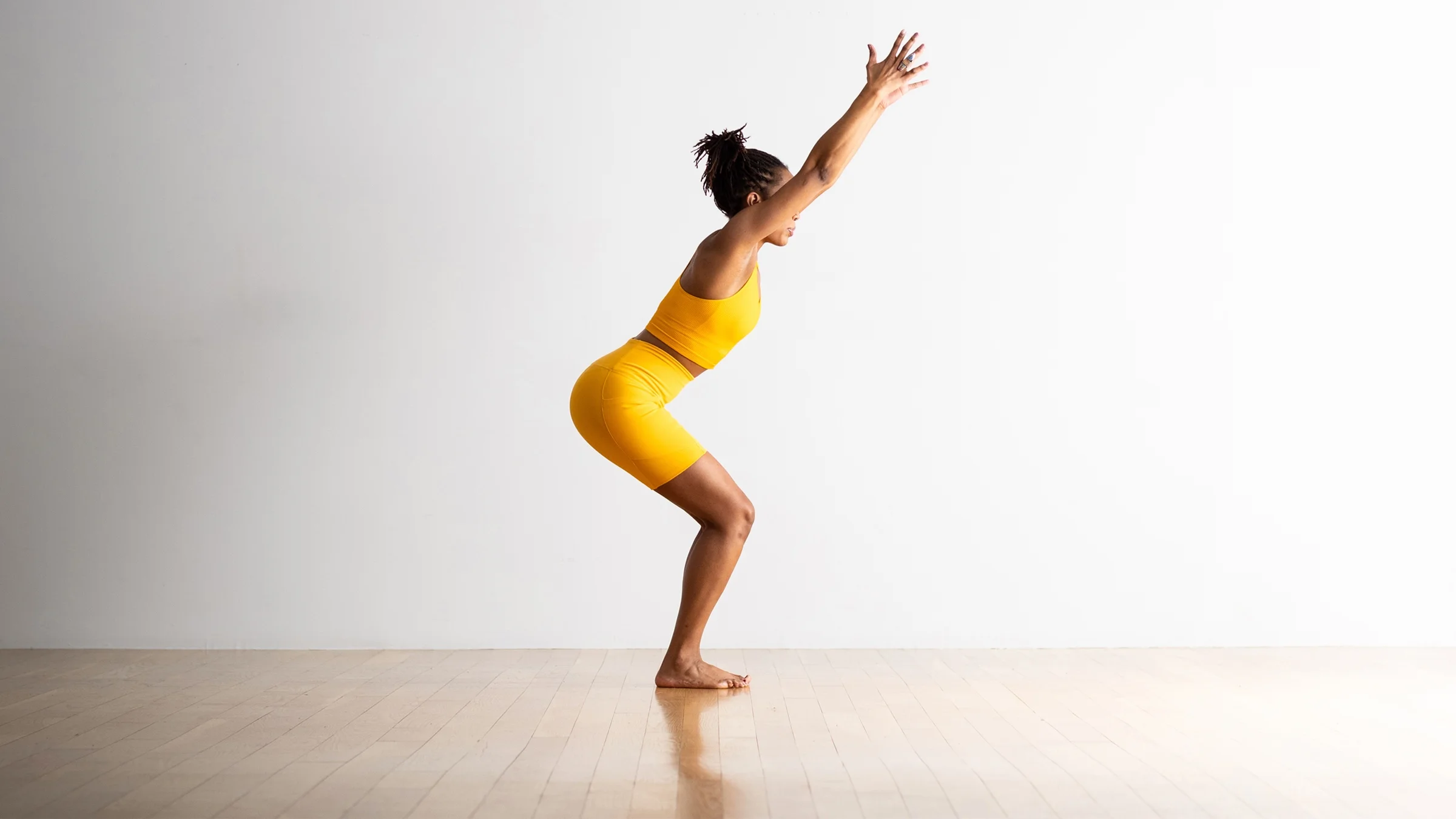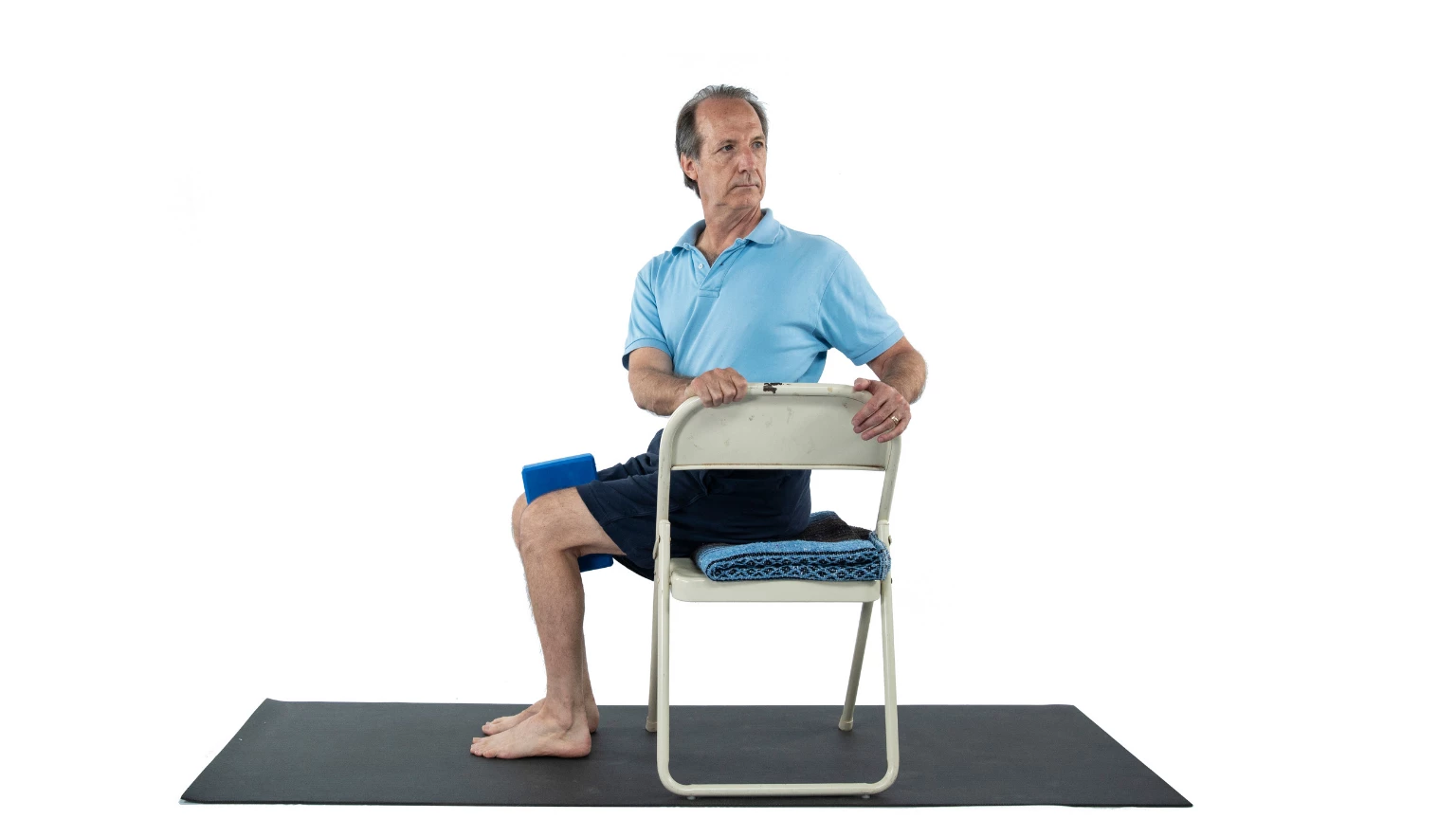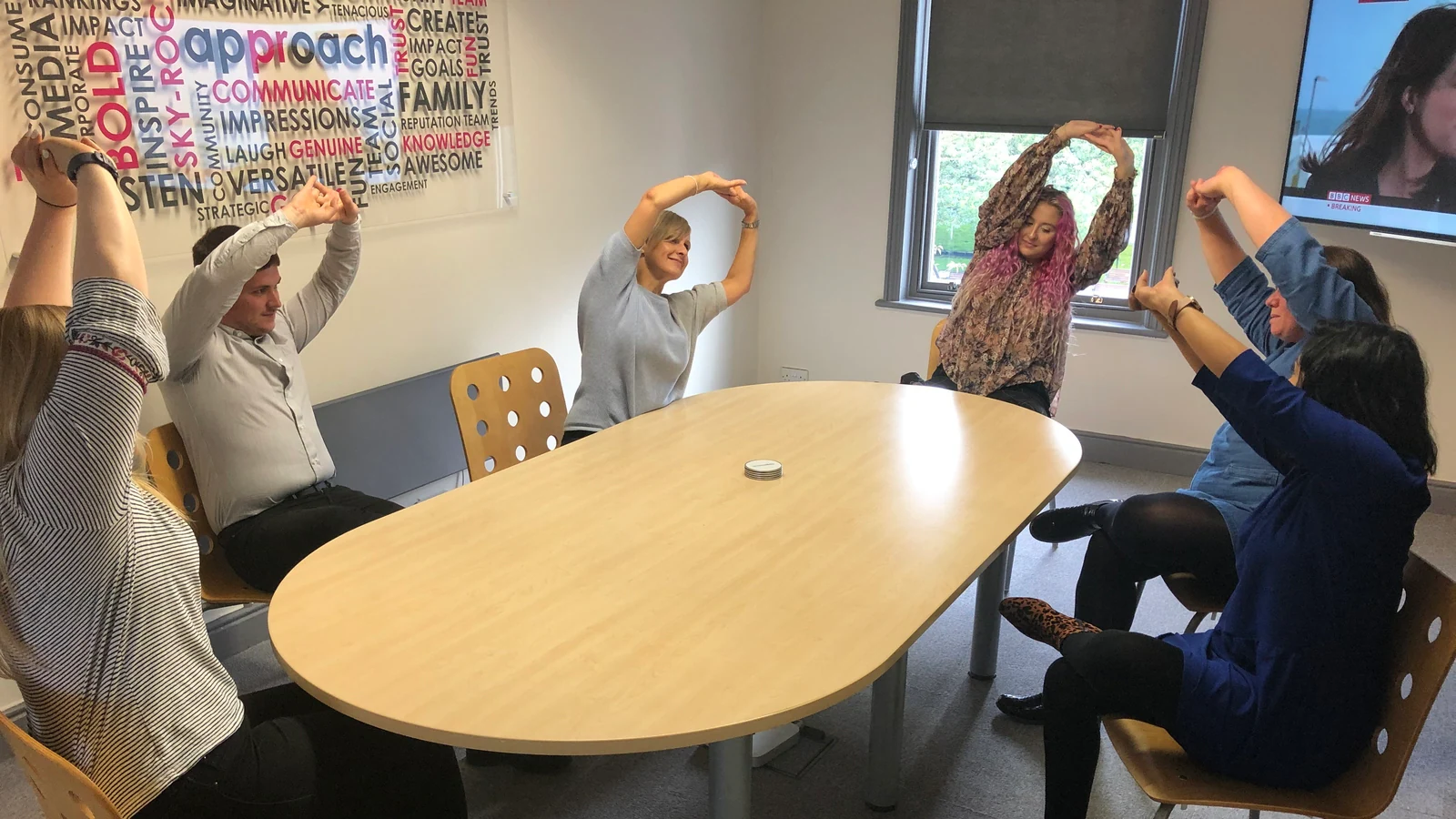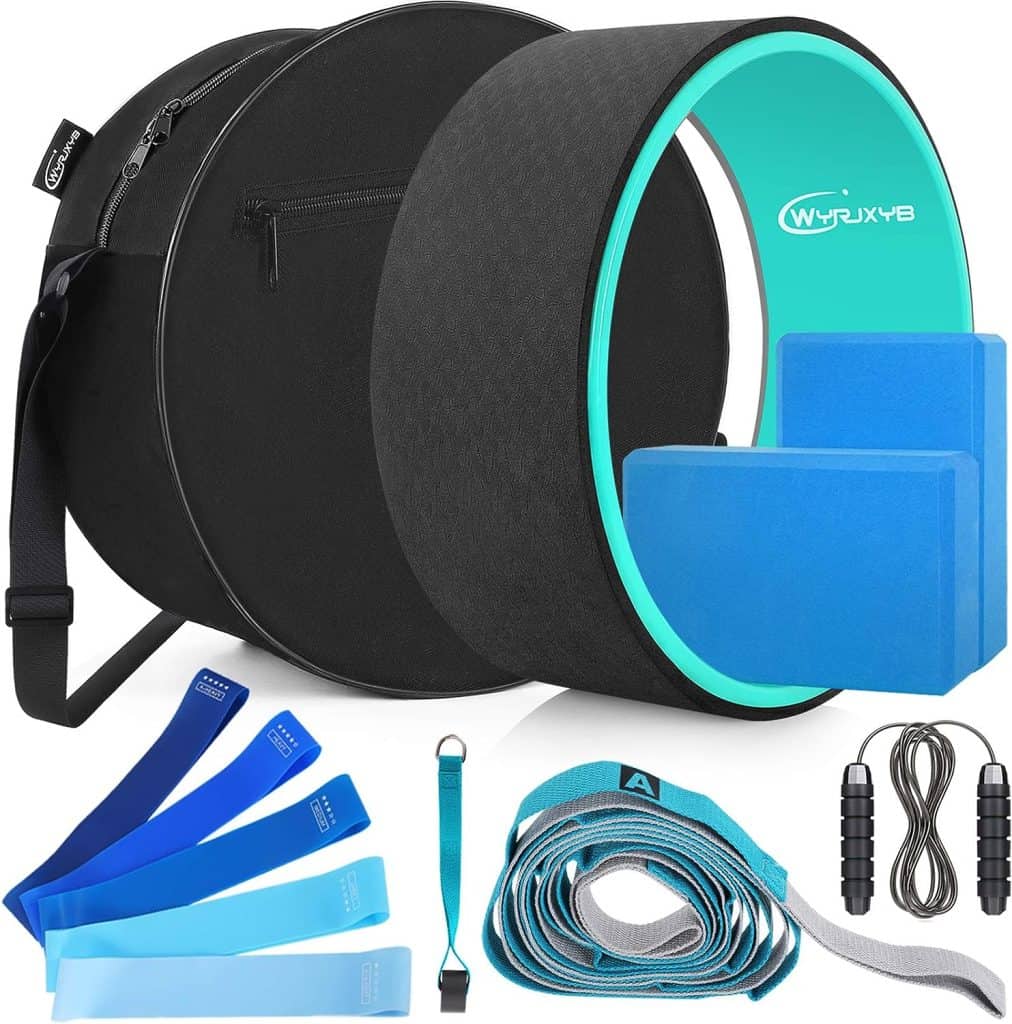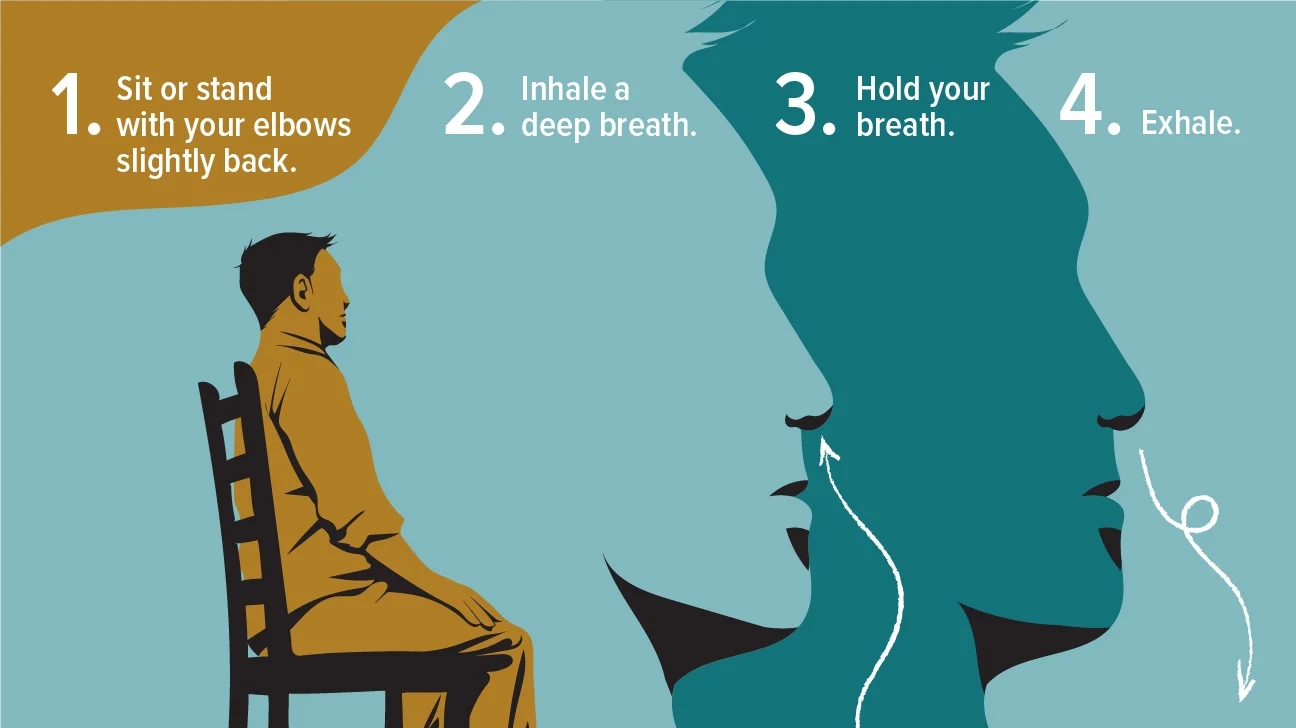In this article, we will explore the benefits of yoga for workplace stress, specific yoga poses and exercises you can do at your desk, tips for creating a yoga routine, and other strategies to reduce stress in the workplace.
In today’s fast-paced and demanding work environments, stress has become a common occurrence. The constant pressure to meet deadlines, handle multiple tasks, and deal with difficult colleagues can take a toll on your physical and mental well-being.
However, incorporating yoga into your daily routine can be a game-changer when it comes to managing workplace stress. Not only does yoga help reduce physical tension, but it also improves mental clarity and focus, increases energy levels, and promotes relaxation and stress relief.
Benefits of yoga for workplace stress
Reduces physical tension
One of the primary benefits of yoga for workplace stress is its ability to reduce physical tension. Sitting at a desk for long hours can lead to muscle stiffness and discomfort.
Yoga poses, such as the chair pose, forward fold, and seated spinal twist, help stretch and release tension in the muscles, particularly in the back, neck, and shoulders.
By incorporating these poses into your routine, you can alleviate physical discomfort and promote a sense of relaxation in your body.
Improves mental clarity and focus
Workplace stress often leads to a scattered mind and difficulty concentrating on tasks. Yoga can help improve mental clarity and focus, allowing you to be more productive and efficient.
Through deep breathing exercises and mindfulness techniques, yoga helps calm the mind and bring your attention to the present moment. This increased mental clarity can help you stay focused on your work and make better decisions, even in high-pressure situations.
Increases energy levels
Feeling drained and fatigued at work is a common symptom of workplace stress. Yoga can help boost your energy levels and combat fatigue.
Certain yoga poses, such as the chair pose and forward fold, stimulate blood circulation and stretch the muscles, providing a natural energy boost.
Additionally, deep breathing exercises and meditation techniques practiced during yoga can help calm the nervous system and rejuvenate your energy levels.
Promotes relaxation and stress relief
Perhaps the most significant benefit of yoga for workplace stress is its ability to promote relaxation and stress relief.
Yoga encourages the release of endorphins, which are natural mood-boosting hormones. By practicing yoga regularly, you can reduce stress levels, improve your overall well-being, and create a sense of calmness and balance in your life.
Yoga also incorporates mindfulness and meditation, which are powerful tools for managing stress and promoting a sense of inner peace.
Yoga poses for workplace stress
Chair pose
The chair pose is a simple yet effective yoga pose for reducing workplace stress. Stand with your feet hip-width apart, raise your arms overhead, and bend your knees as if you are sitting back into an imaginary chair.
Hold this pose for several breaths, feeling the stretch in your thighs and strengthening your core. The chair pose helps improve posture, increase energy levels, and release tension in the lower body.
Forward fold
The forward fold is a gentle yoga pose that helps release tension in the back and hamstrings. Stand with your feet hip-width apart, hinge forward from your hips, and let your upper body hang over your legs. Allow your head and neck to relax.
You can bend your knees slightly if needed. Take deep breaths and feel the stretch in your back and hamstrings. The forward fold promotes relaxation, relieves stress, and improves blood circulation.
Child’s pose
Child’s pose is a restorative yoga pose that helps release tension in the back, shoulders, and neck. Start by kneeling on the floor, then sit back on your heels and fold your upper body forward, resting your forehead on the mat.
Extend your arms in front of you or alongside your body. Take slow, deep breaths and allow your body to relax into the pose. Child’s pose promotes relaxation, relieves stress, and calms the mind.
Seated spinal twist
The seated spinal twist is a seated yoga pose that helps release tension in the spine and improve digestion. Sit tall in your chair with your feet flat on the floor.
Place your right hand on the back of the chair and twist your torso to the right, placing your left hand on your right knee.
Hold the twist for a few breaths, then repeat on the other side. The seated spinal twist helps relieve tension in the back, improve spinal mobility, and reduce stress.
Corpse pose
The corpse pose, also known as Savasana, is a relaxation pose that helps calm the mind and promote deep relaxation. Lie flat on your back with your arms by your sides and your legs extended. Close your eyes and take slow, deep breaths.
Allow your body to completely relax and let go of any tension or stress. The corpse pose is a powerful tool for reducing stress, promoting relaxation, and rejuvenating the body and mind.
Simple yoga exercises to do at your desk
Neck stretches
Sitting at a desk for long periods can lead to neck stiffness and discomfort. To relieve tension in the neck, try simple neck stretches. Gently tilt your head to the right, bringing your right ear towards your right shoulder.
Hold for a few breaths, then repeat on the other side. You can also gently rotate your head in circles, both clockwise and counterclockwise, to release tension in the neck muscles.
Shoulder rolls
Shoulder rolls are an excellent way to release tension in the shoulders and upper back. Sit tall in your chair and roll your shoulders forward in a circular motion.
After a few rotations, reverse the direction and roll your shoulders backward. This simple exercise helps improve circulation, relieve shoulder tension, and promote relaxation.
Wrist and finger stretches
Typing and using a computer mouse for extended periods can cause wrist and finger stiffness. To alleviate this discomfort, try wrist and finger stretches. Extend your arms in front of you, palms facing down, and gently bend your wrists upward, feeling the stretch in your forearms.
You can also interlace your fingers and rotate your wrists in circles to release tension. Additionally, spread your fingers wide and then make a fist several times to stretch and strengthen your hand muscles.
Seated spinal twist
The seated spinal twist can also be done at your desk. Sit tall in your chair and place your right hand on the back of the chair.
Twist your torso to the right, placing your left hand on your right knee. Hold the twist for a few breaths, then repeat on the other side. This seated twist helps release tension in the spine and improve spinal mobility.
Deep breathing exercises
Deep breathing exercises are a simple yet powerful way to reduce stress and promote relaxation. Sit comfortably in your chair, close your eyes, and take a deep breath in through your nose, filling your belly with air.
Slowly exhale through your mouth, letting go of any tension or stress. Repeat this deep breathing exercise for several minutes, focusing on the sensation of your breath and allowing your body to relax with each exhale.
Creating a yoga routine for workplace stress
Setting aside time for yoga
To incorporate yoga into your daily routine, it’s essential to set aside dedicated time for practice. Whether it’s early in the morning, during your lunch break, or in the evening, find a time that works best for you.
Start with shorter sessions, such as 10-15 minutes, and gradually increase the duration as you become more comfortable. Consistency is key, so aim to practice yoga at least a few times a week to experience the full benefits.
Here’s a simple yoga routine that you can perform during breaks or at the workplace:
| Time | Yoga Practice and Focus | Duration |
|---|---|---|
| 10:00 AM | Seated Cat-Cow Pose: Sit on a chair, arch and round your back, syncing movement with breath. | 3 mins |
| 10:03 AM | Chair Twist: Sit tall, twist your torso gently to each side, holding the chair for support. | 3 mins |
| 10:06 AM | Neck and Shoulder Stretches: Gently stretch your neck and shoulders in various directions. | 3 mins |
| 10:09 AM | Seated Forward Fold: Hinge at your hips, reaching towards your feet while seated on the chair. | 3 mins |
| 10:12 AM | Desk Yoga Tree Pose: Stand beside your desk, balance on one leg, placing the foot on the inner thigh. Hold onto the desk for support. | 3 mins |
| 10:15 AM | Wrist and Hand Stretch: Extend your arms, gently stretch and flex your wrists and fingers. | 3 mins |
Notes:
- Seated Cat-Cow Pose: Loosen up the spine and enhance mobility while seated.
- Chair Twist: Release tension in the back and improve spinal flexibility.
- Neck and Shoulder Stretches: Relieve tension in the neck and shoulders caused by long hours of sitting.
- Seated Forward Fold: Stretch the back and hamstrings while seated.
- Desk Yoga Tree Pose: Improve balance, focus, and stretch the legs.
- Wrist and Hand Stretch: Alleviate stiffness and strain from typing or using a mouse.
Performing these yoga poses during work hours can help manage stress, ease muscle tension, and improve productivity. Adjust the duration and poses based on your workspace and schedule. Remember to listen to your body and modify the poses as needed to suit your comfort and preferences.
Choosing the right yoga style
There are various yoga styles to choose from, each offering unique benefits. When it comes to managing workplace stress, gentle and restorative yoga styles, such as Hatha or Yin yoga, are particularly beneficial.
These styles focus on slow, mindful movements and deep stretching, promoting relaxation and stress relief. Experiment with different styles to find the one that resonates with you and meets your specific needs.
Adapting yoga poses for the office
While some yoga poses may be challenging to do in an office setting, there are ways to adapt them to suit your environment. For example, if you don’t have access to a yoga mat, you can practice poses directly on your office carpet or use a folded towel or blanket for cushioning.
Additionally, you can modify poses to be done in a chair or against a wall. The key is to make yoga accessible and comfortable within the limitations of your workplace.
Incorporating mindfulness and meditation
In addition to physical poses, incorporating mindfulness and meditation into your yoga routine can further enhance its stress-reducing benefits. Mindfulness involves bringing your attention to the present moment and observing your thoughts and sensations without judgment.
Meditation, on the other hand, focuses on quieting the mind and cultivating a sense of inner peace. By practicing mindfulness and meditation alongside yoga, you can develop a more profound connection between your body and mind, leading to increased stress resilience.
Other strategies to reduce workplace stress
Take regular breaks
Taking regular breaks throughout the workday is crucial for managing stress. Use these breaks to stretch, walk around, or engage in relaxation techniques. Stepping away from your desk and giving yourself a mental and physical break can help refresh your mind and reduce stress levels.
Practice good time management
Poor time management can contribute to workplace stress. Prioritize your tasks, set realistic deadlines, and break larger projects into smaller, manageable steps. By effectively managing your time, you can reduce the feeling of being overwhelmed and increase your productivity.
Establish healthy boundaries
Setting boundaries at work is essential for maintaining a healthy work-life balance and reducing stress. Learn to say no when your plate is already full, delegate tasks when possible, and communicate your needs and limitations to your colleagues and superiors. Establishing healthy boundaries allows you to prioritize self-care and prevent burnout.
Engage in stress-reducing activities outside of work
In addition to yoga, engaging in stress-reducing activities outside of work can further support your well-being. Find activities that bring you joy and help you relax, such as spending time in nature, practicing hobbies, or connecting with loved ones.
Taking care of your overall well-being outside of work can significantly impact your ability to manage workplace stress.
Conclusion
Incorporating yoga into your daily routine can be a powerful tool for managing workplace stress. By reducing physical tension, improving mental clarity and focus, increasing energy levels, and promoting relaxation and stress relief, yoga offers a holistic approach to combatting the pressures of the modern workplace.
Whether you choose to practice specific yoga poses at your desk or create a dedicated yoga routine, remember to prioritize self-care and make time for activities that support your overall well-being. By taking proactive steps to manage workplace stress, you can create a healthier and more balanced work environment for yourself.
Originally posted 2023-07-27 08:18:44.


